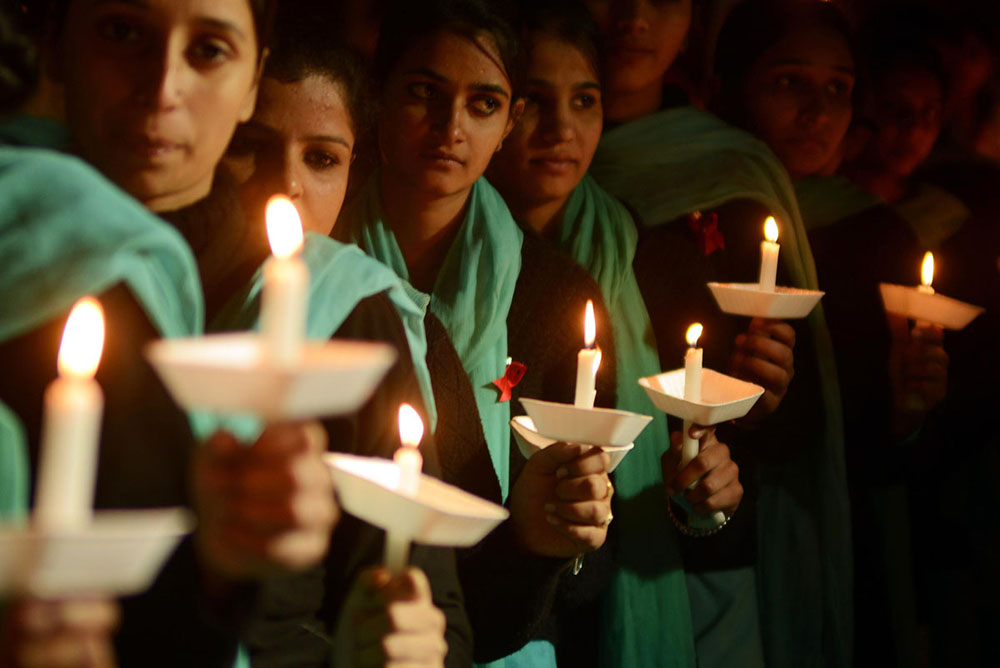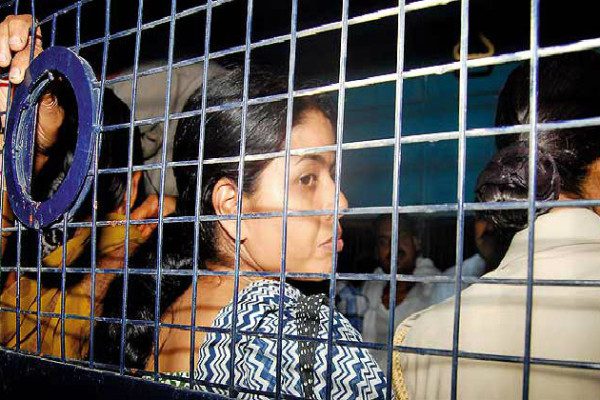Why is Modi only a symptom of a disease? Writes Sayan Bhattacharya sitting on his armchair.
Prologue:
Once upon a time there was a man, let’s say his name was M, who got through to a prestigious university as an English professor. This was his first job. So it was but obvious that he would be a bundle of nerves. However, that’s only a small part of the story. He was the first from his family to have had access to higher education. He was the first to get through to such a high profile job in his family. Okay, now we will name the unnamable. He was from a low caste community in Bengal. He was a Dalit. So a thousand years of a history of oppression and violence weighed down on him but surely he had broken the Brahminical shackles of knowledge production or so he thought. He would claim what was his. He started taking classes with zeal. The students did not like his diction and they sniggered. The other professors in the department sardonically commented, “This is what happens when you are recruited because of a quota!” And after that, the story is a haze. There are multiple versions, that is.
M alleged that the students abused him on their answer sheets during a semester exam, which the students obviously denied. He also alleged that his colleagues harassed him regularly. Someone, once, locked him in the washroom. Another professor shot back saying that the man was a “perv”, ill treating his wife, propositioning female students though nobody asked this professor how he knew about M’s personal life. Also, were there complaints of sexual harassment by the students? Some even said that it was M who was harassed and being a man, had therefore become laughing stock! A committee was instituted to find the “real” story where M stated that the department was casteist and he had to bear the brunt. Amidst all the Bhattacharjees, Choudhurys and Mukherjees, here was one Mandal! M got his job back and all was well, as well as it could be.
M is hardly seen in his department today. He rarely takes classes. In fact, he is hardly allotted classes. When he comes, he sits in a room where none of his colleagues sit. M is an island. M is a story. A nameless story.
I
The day Narendra Modi came to power, many of us removed our profile pictures on facebook and used a black band, as a mark of protest against Fascist rule. Academics, intellectuals, liberals, Marxists, left radicals, feminists, lgbt rights activists and others flooded their timelines with outrage. So did I. As one logged onto facebook, one found the links to the gushy essays by turncoat intellectuals, who vaulted from the left to the right, the wistful liberals (no, actually Conservatives) who sat on the fence and chose to observe the circus while giving a benefit of doubt to the 56 inch chest and then there were the school friends who threw parties celebrating a decisive mandate and chose to perversely tag you in the photographs to rub it in!
If you are wondering about this facebook obsession, then, my friend, you are in a bubble. Life has just passed you by because facebook has become life! Here, people debate about governments, politics, films and everything else and then it degenerates into name calling and then blocking of profiles. People will track the “likes” you have given to such and such posts and deduce your politics and then choose to “friend” or “block” you. What is engagement? What does it mean? And above all else, we have a Prime Minister who used social networking in the most innovative and professional ways to establish that mythical connect with the country’s youth! So who dares to ignore facebook? On the other hand, were the few solidly researched pieces on the electorate composition punching holes into the majority mandate thesis, the pieces on the ad campaigns that created the Modi brand, the essays on why 1984 and 2002 are not the same and so on. So on one side was the hysterics of facebook and on the other, were the grounded journalistic pieces. So as a writer, if I were to respond to the current political scenario, how would I? I did not know for days.
And then one night (29th May, 2014), I saw a photograph circulating on, where else but facebook. Two minor girls had been raped and their bodies were hung to a tree, in the Badaun district, Uttar Pradesh. They were Dalit. The photograph was being circulated, apparently to shock the middle classes out of their apathy and make them come out on the streets and demand justice. Some of us tried in vain to quote from Savari, a forum for dalit, adivasi and Bahujan women:
“When rape-shield laws such as Section 228 A exist and is enforced in its totality for upper caste women victims of rape – breaking this law for dalit and adivasi girls and women victims (dead and alive) is what? It is caste oppression – please do not put forward arguments that this is in anger, in mourning, or protest or a means to awaken an apathetic audience. It is not just unethical, it is CRIMINAL, and it is caste oppression on dalit and adivasi girl victims by the ones publishing and sharing these images.
This is caste, class and gender oppression on extremely impoverished dalit and adivasi families who cannot afford to take this aspect to court.
If the victims belonged to an upper caste family and community, they will(sic) take the law breakers of Section 228 A to court.
Please do not circulate the images of the raped and murdered dalit girls.”
But we were told off with romantic yarns of the potency of the image and how it can provoke a deadened conscience. So then, why is this potency invoked only when a dalit or an adivasi woman is brutalized? Jyoti Pandey died more than a year back but the nation still knows her as Nirbhaya (even after her family gave interviews, giving her full name) but a Soni Sori cover picture will ensure a hundred likes, and quick brownie points with fellow lefties who dream of a classless society, isn’t it? But, we (and you, who read this magazine regularly over steaming cups of black coffee), who consume the internet regularly, who are regularly fed on a diet of hyper masculine, pastiche post modern films where blood blends with ketchup, what is actually our threshold level? Is this photograph horrific enough to make us stage marathon protests at Jantar Mantar (there have been some protests, but just a cursory comparison between June 2014 and December 2012 proves the point)? If yes, then, why this silence still? Or is a “like” on the image and then a few sentences in the “comment” section, enough?
However, the larger question is have we sunk to such levels of anesthetic torpor that just a report of the horrific rape not enough to jolt us into action? We require the brutalized Dalit bodies laid out before us like museum exhibits to make us act?
The story doesn’t end there for it was subsequently reported that the girls were not Dalit. They belonged to the Maurya community, a ‘lower’ caste still but they belonged to the OBC category just like the men from the Yadav community who had raped and murdered them. However, the mainstream media and users of social networking sites either refused to utter the c word or if they did, they continued to refer them as the dalit girls. This brings us back to the argument on exhibition. To mark those bodies as ‘dalit’ not only invisibilises their subjectivities (for instance, the lack of toilets in their homes and how the Yadavs dominate the other castes and what does such domination mean for women and so on) but it also effectively normalizes the violence inflicted on the ‘other’. To put it crassly, it happens to them because who they are, ‘they’ being at a safe distance from ‘us’. Though the caste identities of the girls have been established, the media continues to refer them as Dalit girls. This is not ignorance. This is sheer arrogance and it is criminal.
(Please note: The previous paragraph was inserted later by me after reports of the girls not being Dalit emerged. However, no other changes have been made in the section to trace the whole trajectory of the Badaun murders.)
II
Now you might ask what exactly is this piece about? Is it Modi, is it casteism, is it designer activism, what exactly, am I trying to say? Perhaps this is just ranting!
But a couple of weeks after the “historic mandate”, I find myself introspecting. Modi is not the real danger. He is just the symptom. The disease remains embedded in us, the upper class, upper caste minority who has a stranglehold on all the privileges that the state has to offer and who refuse to look in the eye our caste biases, who speak of solidarities, yet choose to invisibilise the lower caste majority. So then, what hope can the religious minorities have (in fact, so self absorbed and complacent we have become that some of us are using the image of Qutubuddin Ansari’s crying face on our profiles to show anger at the election results, no matter if the man keeps saying that he does not want to be dragged back to those horrific memories of 2002)? Modi has secured only 31% of the total votes polled which means the majority are not with him. So who are these minorities who have voted for him? To say that Modi is dangerous because his is a “democratically elected totalitarian state” (Arundhati Roy on the new government) is only the tip of the iceberg. But are we willing to look underneath? Are we willing to face the fact that we are a Brahminical nation, just that this identity is so obviously embedded in us that we choose to keep it unmarked? And the moment, there is an effort to mark it, it becomes narrow identitarian politics?
Epilogue:
Many gay rights activists (including feminist lesbian groups), with their rainbow hopes, are preening with joy! Rashtriya Swayam Sevak Sangha spokesperson Ram Madhav, in a recent interview, said that the RSS is moving with the times. Their shakhas have now moved to the coffee shops in IT hubs. They do not expect the tech guys to appear in khaki shorts anymore. In the same breath, he added that while homosexuality could not be glorified, criminalizing it was questionable! So there! The silver lining behind the 377 clouds! What were those theories about the state being heteropatriarchal, majoritarian and patriarchal? So long as we get our lollies, who cares, isn’t it? You are being divisive if you say this is brahminisation of sexuality!
Imagine a bright sunny morning. Two homosexual men having a Hindu Brahmin wedding, complete with all the rituals, being telecast live on Times Now. Arnab Goswami is teary with joy! Achhe Din Aagaye Hain!
The good Hindu gays and the good Hindu lesbians in the grand metanarrative of a Brahmin Bharat…














